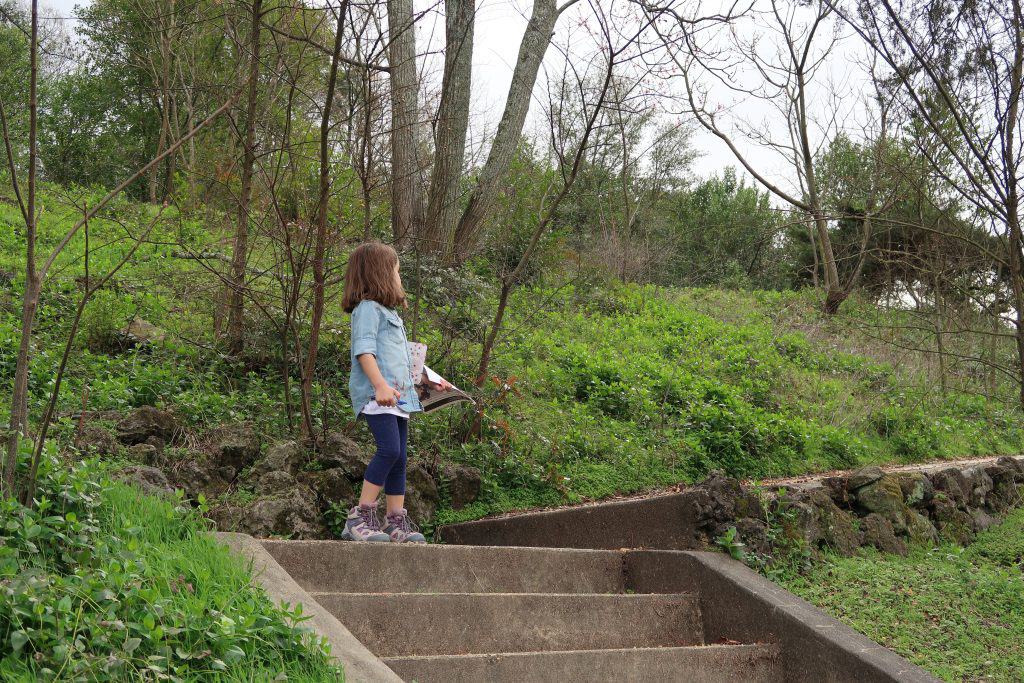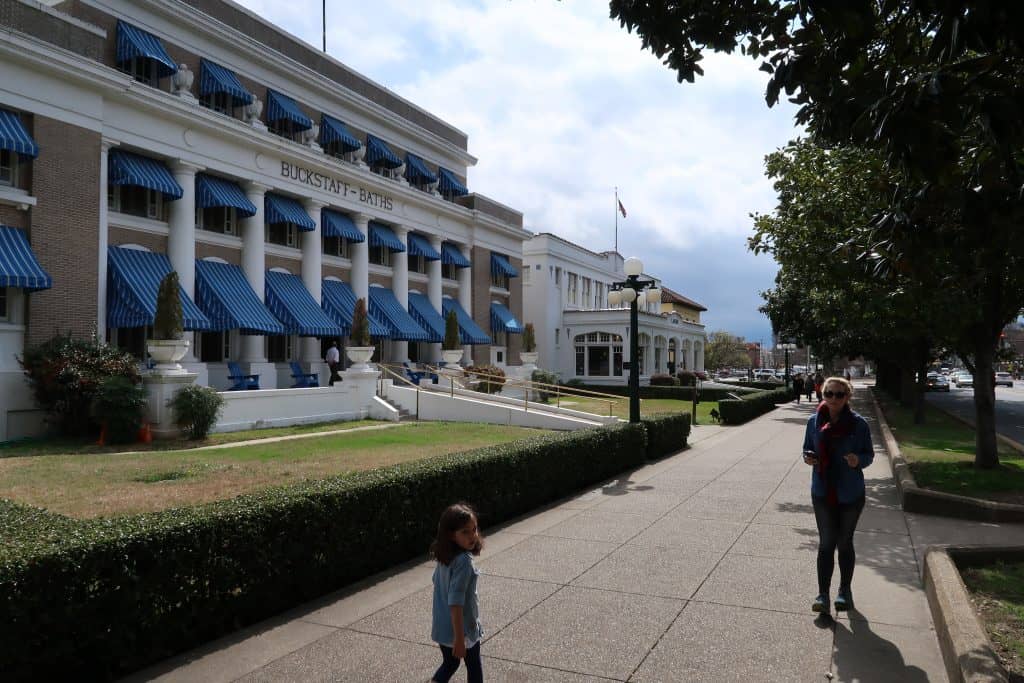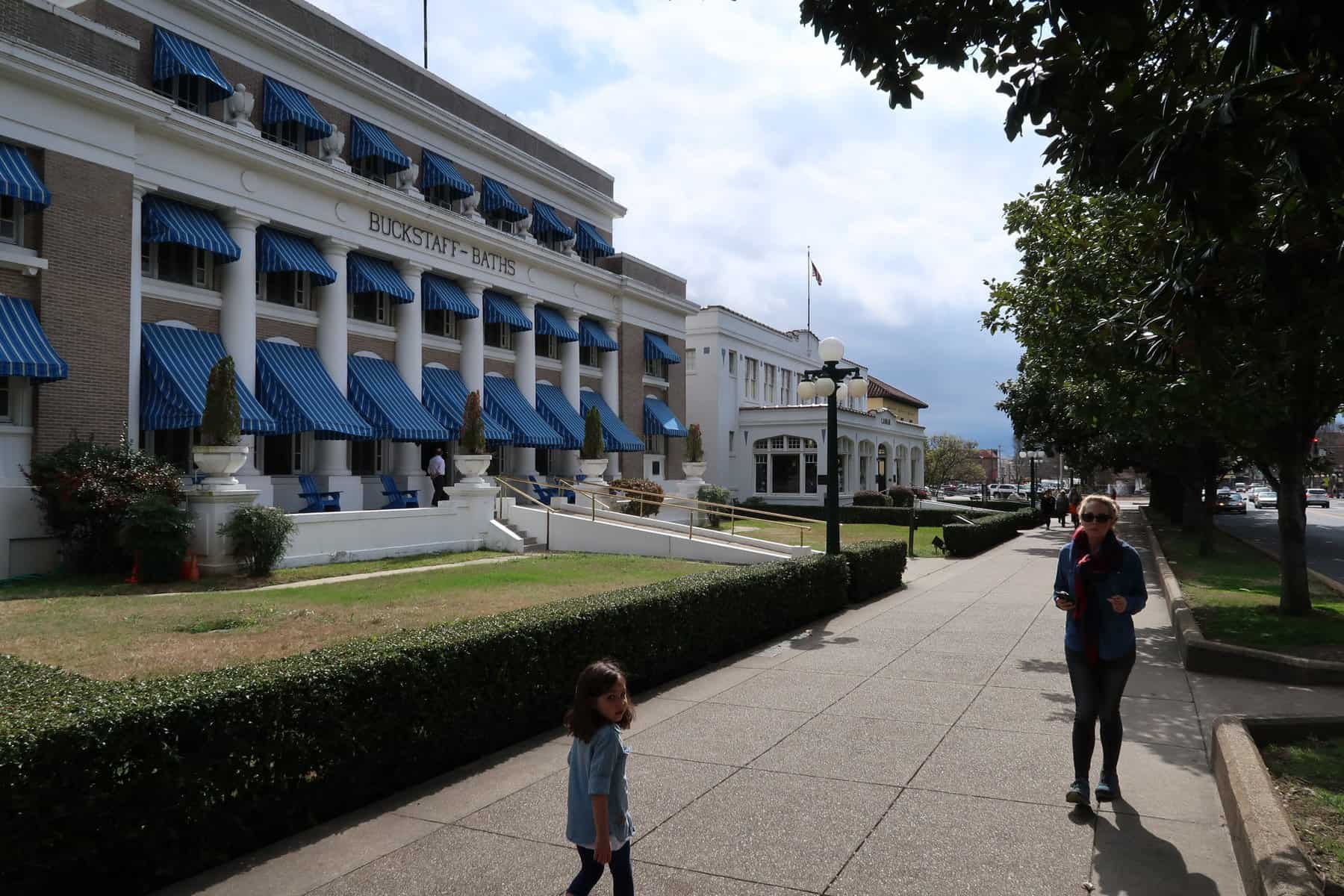Hot Springs National Park is a unique and beautiful area located in the heart of Arkansas, known for its stunning natural hot springs and its rich history.
Here are just a few reasons why Hot Springs National Park is so special.

Rich History
Hot Springs National Park is located in Hot Springs, Arkansas, and is known for its natural hot springs that have been revered for their healing properties for centuries. Its roots date back to the Native American tribes who first discovered the therapeutic benefits of the hot springs.
During the late 19th and early 20th centuries, Hot Springs was a popular destination for those seeking the healing powers of the hot springs.
The park is now home to the historic Bathhouse Row, a collection of eight bathhouses built between 1892 and 1923.
Visitors can explore these historic structures and learn about the history of hot springs as well as the history of the park and the surrounding area.
Here is a brief history of Hot Springs National Park:
- Native American Settlement: The area around Hot Springs was home to various Native American tribes including the Caddo, Osage, and Quapaw. They believed the hot springs had healing powers and used them for therapeutic and spiritual purposes. Their history with the springs is reported to be as old as 10,000 years.
- Early Exploration: The first recorded visit to the hot springs was by Hernando de Soto and his expedition in 1541. In the 1800s, European settlers began exploring the area and soon realized the potential for the hot springs as a tourist destination.
- Hot Springs Reservation: In 1832, Congress designated the area around the hot springs as a federal reservation, making it the oldest area in the National Park System. The reservation was set aside to protect the hot springs and their surrounding areas from commercial exploitation.
- Development as a Spa Destination: In the late 1800s and early 1900s, Hot Springs became a popular spa destination attracting people from all over the world seeking the therapeutic benefits of the hot springs. Numerous bathhouses and hotels were built during this time to accommodate the influx of visitors.
- National Park Designation: In 1921, Hot Springs Reservation was redesignated as Hot Springs National Park making it the 18th national park in the United States. The park continued to grow and develop with new trails, roads, and facilities being added over the years.
- Preservation and Protection: Today, Hot Springs National Park is managed by the National Park Service and remains an important cultural and natural resource. The park’s natural hot springs are still a major draw for visitors, and the historic bathhouses and other buildings in the park have been preserved and restored to their early 20th-century appearance.
The Buckstaff Bathhouse is the only original, remaining bath house in Hot Springs National Park.
For reservations and services, click HERE. Sixteen-years-old is the minimum age for these services.
The park continues to attract visitors from all over the world who come to experience their healing powers and to explore its natural beauty and cultural heritage. Read more about the best spots to soak on Bathhouse Row!
Therapeutic Benefits
Soaking in hot springs has been associated with numerous health benefits for centuries. Though they are not for everyone, the hot springs are rich in minerals and are naturally heated, making them the perfect place to relax and unwind after a long day of exploring the park.
While scientific research is ongoing, many people believe that hot springs have therapeutic properties that can help with a variety of ailments.
Here are some of the alleged health benefits of soaking in hot springs:
- Relaxation and Stress Relief: Soaking in hot springs can promote relaxation and reduce stress. The warm water can help to soothe tense muscles and promote feelings of calmness and relaxation.
- Pain Relief: Hot springs are often used to help relieve pain associated with conditions like arthritis, fibromyalgia, and other chronic pain conditions. The warm water can help to increase blood flow, reduce inflammation, and promote healing.
- Skin Health: The mineral-rich water found in hot springs may have beneficial effects on skin health. Soaking in hot springs may help to improve skin conditions like eczema, acne, and psoriasis.
- Improved Circulation: Soaking in hot springs can help to improve blood flow and circulation, which can benefit overall health and wellness.
- Better Sleep: Soaking in hot springs can promote relaxation and improve sleep quality. Many people report feeling more rested and refreshed after soaking in hot springs.
It’s important to note that while many people believe in the therapeutic benefits of hot springs scientific research on the topic is ongoing.
It’s important to consult with a healthcare provider before using hot springs for therapeutic purposes especially if you have a pre-existing medical condition or are taking medication.

Scenic Beauty
Hot Springs National Park is a haven of scenic beauty with its lush forests, rolling hills, and stunning hot springs. Visitors can explore the park’s many hiking trails which offer views of the surrounding landscape, or visitors can take a leisurely stroll along the historic Bathhouse Row.
The park is also home to a variety of wildlife such as deer, squirrels, and a variety of bird species.
Hot Springs National Park offers many outdoor activities for visitors to enjoy. Some of the most popular activities include…
- Hiking: There are over 26 miles of hiking trails in Hot Springs National Park ranging from easy strolls to more challenging hikes. The trails offer stunning views of the surrounding mountains and valleys, and many pass by historic sites and natural springs.
- Scenic Drives: The park features several scenic drives including the Hot Springs Mountain Drive and the West Mountain Drive. These drives offer breathtaking views of the park’s natural beauty and are a great way to see the park’s highlights in a short amount of time.
- Biking: Biking is a popular activity in and around Hot Springs National Park with several trails designated for biking. Bicycling is authorized on all paved, park roads and on the Pullman Trail. There are rental companies in the area.
- Fishing: Fishing is allowed in the park. Visitors must have a fishing license as required by the state of Arkansas.
- Water Tasting: Another adventurous option that is Hot Springs specific is doing a family water tasting. Enjoy going to all of the springs and outlets to collect, sample, and discuss the tastes of the water.
- Wildlife Watching: Hot Springs National Park is home to a variety of wildlife including deer, birds, and small mammals. Visitors can spot these animals throughout the park especially in the early morning and evening hours.
- Junior Ranger Programs: The park has its own, unique Junior Ranger adventures. We highly suggest you pick up an activity book and enjoy learning more about the park and its history. It is a scavenger hunt of outdoor adventures!
- Ranger-led Activities: The park offers a variety of ranger-led activities such as guided hikes, nature walks, and educational programs. These activities are a great way to learn more about the park’s natural and cultural history.
Overall, Hot Springs National Park offers a wide variety of outdoor activities for visitors to enjoy. Whether you prefer something strenuous or something relaxing, there are activities for everyone in this park!
Hot Springs National Park is truly a unique and special place offering visitors scenic beauty, rich history, and therapeutic benefits.
So pack your bags and head to Hot Springs, Arkansas for an unforgettable experience.

